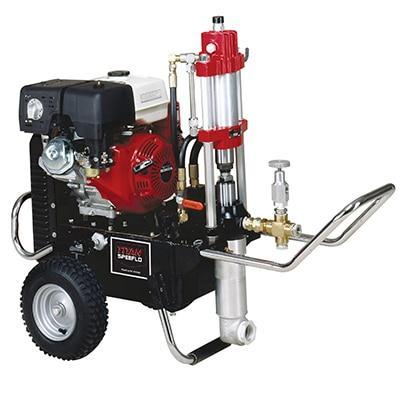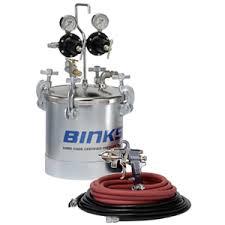How to Apply Coal Tar Epoxy
Coal tar epoxy is a popular protective coating used in a variety of industrial and construction-related projects. It is typically used for extreme corrosion protection and is popular for projects ranging from power plants to steel mills. While coal tar epoxy provides phenomenal protection, applying it can be a pain. However, in this guide, we cover the important things to consider when applying coal tar epoxy.
Before You Apply Coal Tar Epoxy
Before applying Coal Tar Epoxy, you have to ensure the surface you will apply coal tar to is properly prepped. The level of preparation will depend a bit on what the end use is for the product that will be coated.
Below are some of the common end-use environments and the proper preps that are required.
For any application of Coal Tar Epoxy, the product surface should be clean and free of grease. To achieve a clean grease-free surface, it is necessary to use a proper degreaser such as Krud Kutter® Original Cleaner Degreaser. In addition to a degreased surface, the following are recommended.
Steel Surface That Will Be Immersed
For steel surfaces that will be immersed, it is recommended to blast clean the surface to an SSPC-10, NACE-2 blast profile. For steel that is blast cleaned, two coats of epoxy primer will be required. If the Coal tar cures after the first coat, you should brush blast before applying the second coat so that the second coat can adhere to the surface of the product.
Concrete Surfaces That Will Be Immersed
If the concrete is extra dense or non-porous, it should be acid etched or blast profiled to create a 1.5 to 3 mil profile. New concrete should be cured for at least 30 days before applying coal tar epoxy.
Once you have properly prepped the surface by blasting if necessary and cleaning the surface to make it free of grease, the next step is to prep the coating and apply it.
Prepping the Coal Tar Epoxy to Be Applied
Coal tar epoxy is usually a two-component product, so you will have a base coating and an activator. To get the coal tar ready to be applied, the two components should be put together and mixed. Coal tar does have a pot life which is the time you have to apply the product before it starts to harden which can cause problems with your equipment; so if you are using coal tar, ensure you will have sufficient time to use the product you mix before the pot life is up. The two components of coal tar epoxy should be mixed for at least 2 minutes to ensure thorough mixing of the two components. Once mixed, the pot life is about 2 hours at 80 degrees and 1 hour at 100 degrees, colder temperatures will increase the pot life in hours.
Applying Coal Tar Epoxy
Now that you have the surface prepped and material mixed, you can begin applying coal tar epoxy. Coal tar is meant to be applied in thick coats; usually, this means 10.5 to 13.5 wet mils of product to ensure the product will dry and provide sufficient protection. If you will be immersing the product in a harsh environment, the total film build is recommended to be 16-20 dry mils which will require two coats of epoxy rather than a single coat of 10.5 to 13.5 mils.
Coal tar should only be applied when the outside temperature is between 50 and 100 degrees Fahrenheit.
Coal tar epoxy is primarily meant to be spray applied; rolling and brushing are only supposed to be used with small touch-up areas like along welds and similar uses. There are two primary ways you can spray coal tar epoxy, one is with a large airless sprayer, the other with a paint pressure pot and conventional spray gun. To see which would be best for your project needs, check out this guide on Airless vs Pressure pots. If you’re looking for maximum control, a pressure pot and spray gun will be best; for high volume production, an airless will be best.
Below are outfit options for both an airless and Pressure Pot
Airless Outfit
The pump should produce a minimum of 3 GPM and a pressure of 3000 PSI. The tip size you will use is between 23 and 35 thousandths, the larger tip is ideal for larger surfaces while a 23 thousandths tip will be appropriate for smaller areas.
Titan PowrCoat Series 730 3000 PSI @ 4.0 GPM Airless Paint Sprayer - Cart
POWRCOAT™ sprayers are great for virtually any application, including architectural, finishing, industrial maintenance, corrosion control, cold applied roofing, waterproofing, and marine protective coatings.
Titan Hydra M4000 4000 PSI @ 3.30 GPM Airless Paint Sprayer - Filter Model
The all-around powerhouse hydraulic sprayer for any application. This solid, ultra-slow-stroking, three gallon per minute hydraulic system delivers the heaviest, most viscous coatings to any interior and exterior surface with maximum efficiency and minimal downtime.
Paint Pressure Pot and Spray Gun
If you prefer greater control, a paint pressure pot and spray gun will be ideal compared to an airless paint sprayer. The best tip size is usually 1.8 or larger. This outfit comes with 25 feet of hose, a conventional spray gun that will be set up well for the product, and two regulators.
To Spray Coal Tar Epoxy with a spray gun outfit, you may need to thin the epoxy up to 15 percent, however, this will be dependent on how smooth of a finish you want to achieve.
Binks 98C-357 2100 Conventional Spray Gun with 2.8 Gallon Pressure Tank
2.8 GALLON PT CODED TANK, ZINC PLATED, WITH 2100™ SPRAY GUN
This 2.8 Gallon PT Coded Tank System is complete with:
2100 spray gun w/63BSS fluid nozzle (.046) and 63PB air cap (pressure feed)
2.8 gallon PT coded pressure tank with two regulators
25 ft. fluid and air hose assemblies
15 ft. air supply hose assembly
To Spray Coal Tar Epoxy with a spray gun outfit, you may need to thin the epoxy up to 15 percent, however, this will be dependent on how smooth of a finish you want to achieve.
After Spraying
After you have completed applying the epoxy and ensured you have the right wet film build, you should clean your equipment. As already mentioned, coal tar epoxy's short pot life will cause it to start drying in your equipment and if you don’t clean out the equipment quickly, it can ruin your painting equipment.
In addition to cleaning your spray equipment, you should let the coal tar epoxy cure. For water immersion use, it is recommended to let the product dry for 7 days at 77 degrees; if below 77 degrees, additional days of up to 14 days can be required.
If you need to apply two coats of coal tar, you should ensure the base coat is either not fully cured or if it is fully cured, ensure the epoxy is roughened up by light blasting to ensure the base coat is roughed up to maximize the adhesion of the second coat.
Additional Information
If you spray a high volume of coal tar epoxy all day, a plural component airless may be an option to consider. However, most of the time, coal tar is not applied in high volumes daily and can be managed by spraying it in a timely manner rather than using expensive plural component spray equipment.
Summary
Overall, coal tar is an excellent protective coating but does have unique requirements for surface prep and application. By understanding the tips in this guide, you can ensure you get a long-lasting protective finish with minimal headaches.




